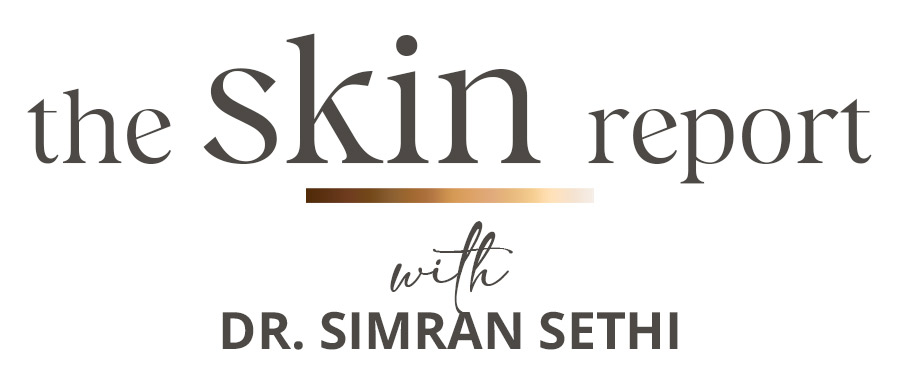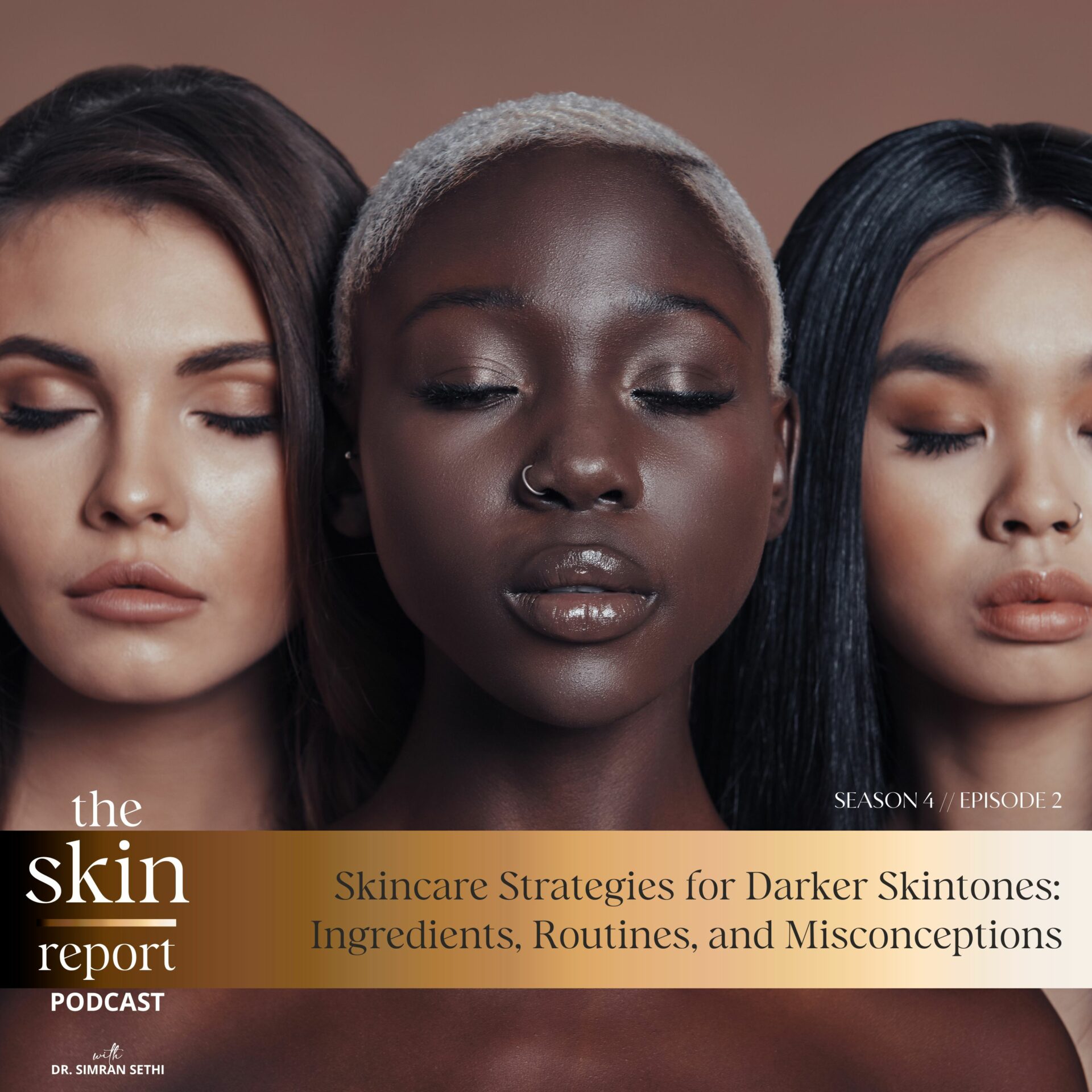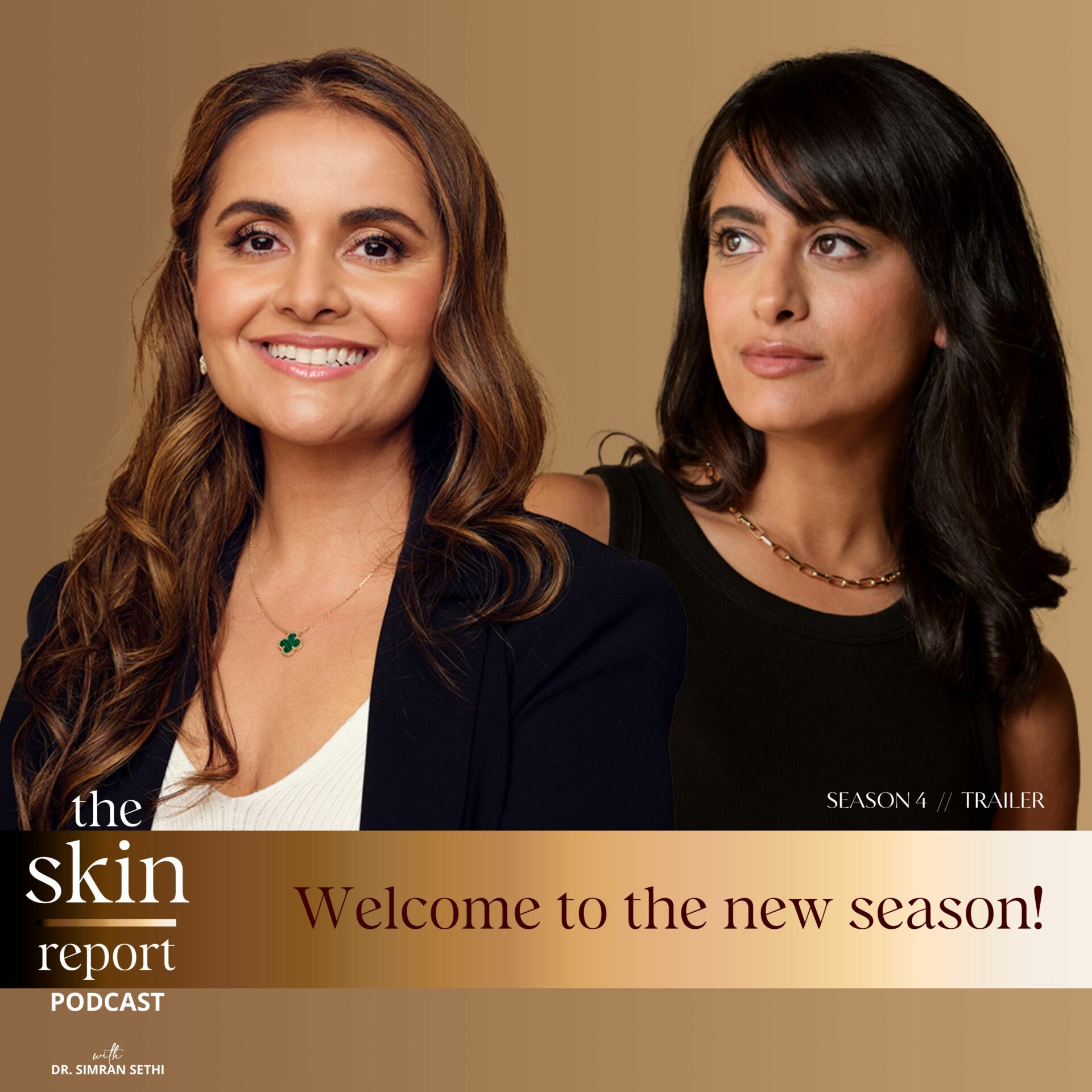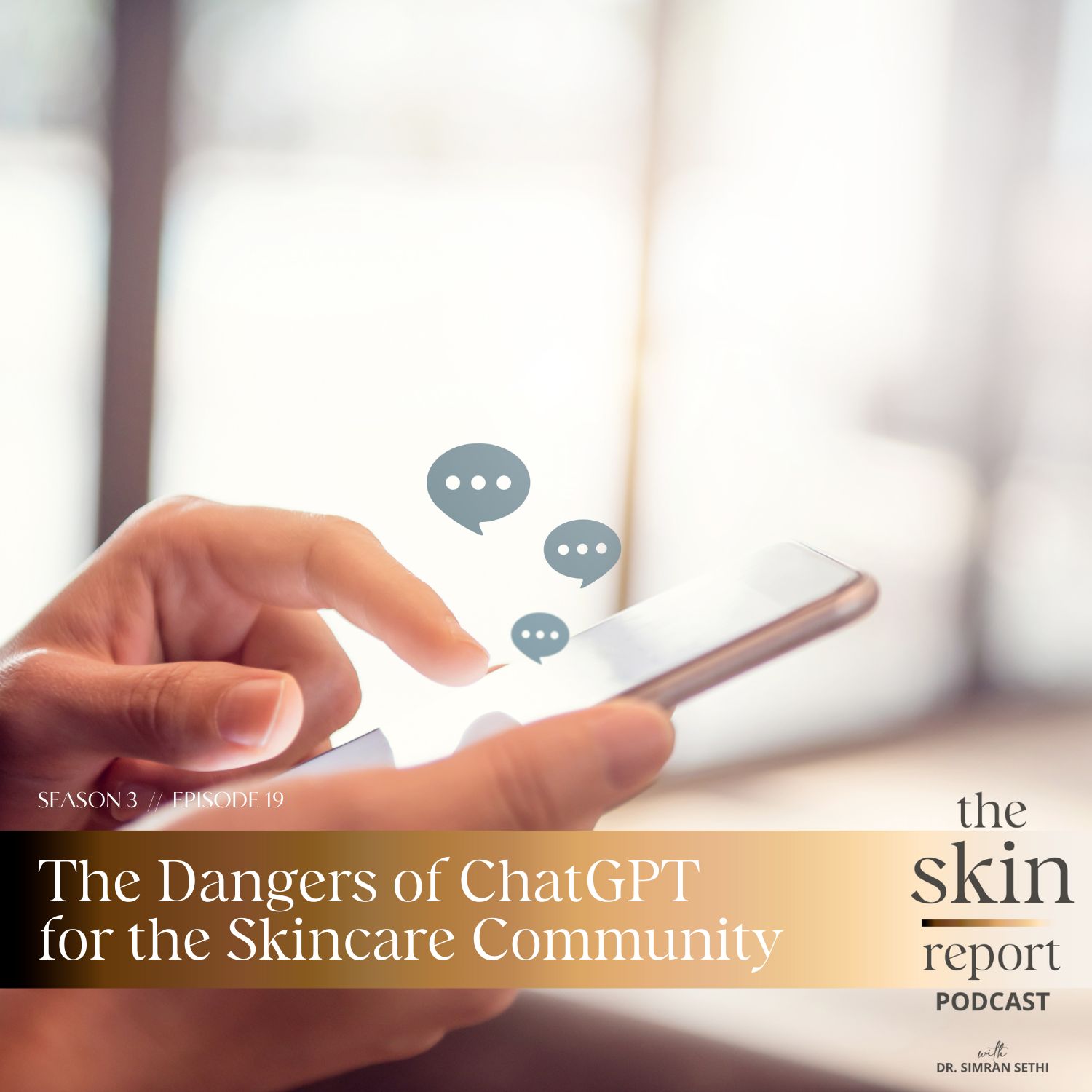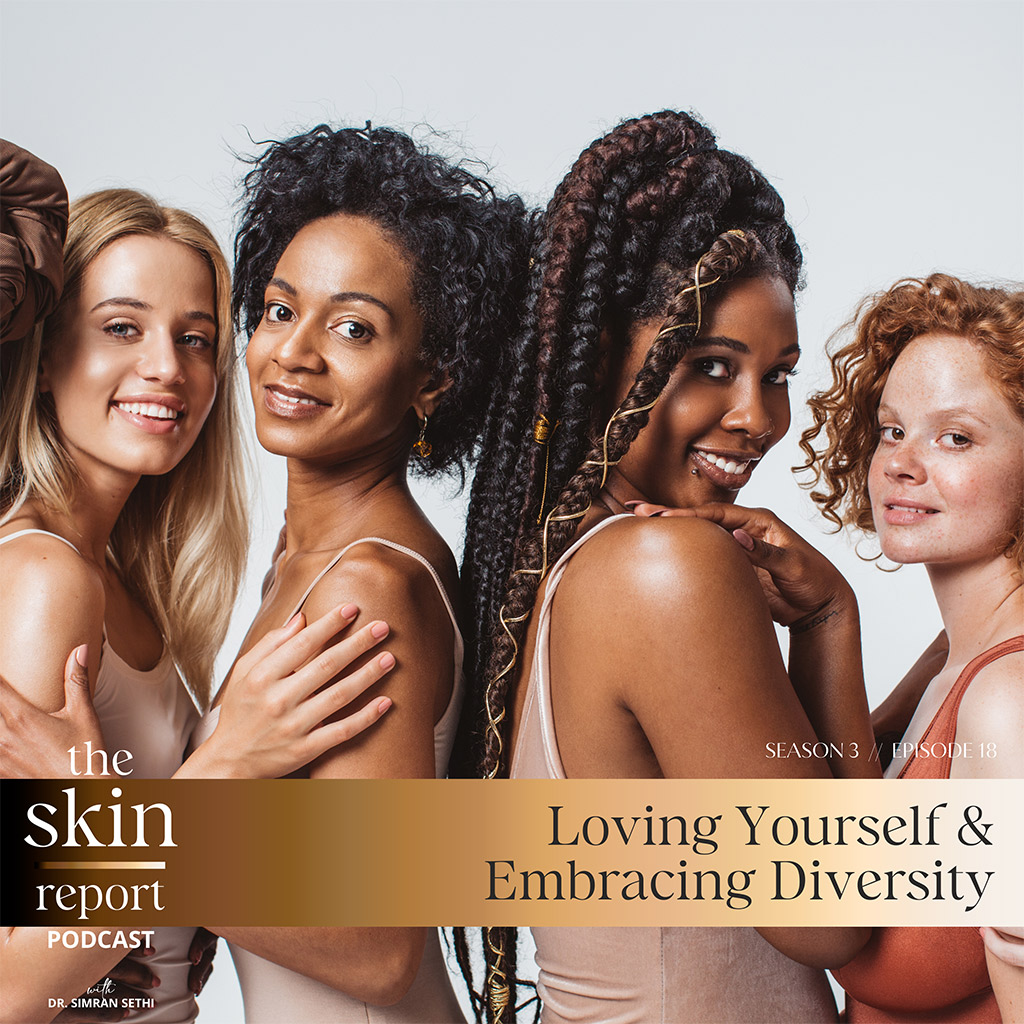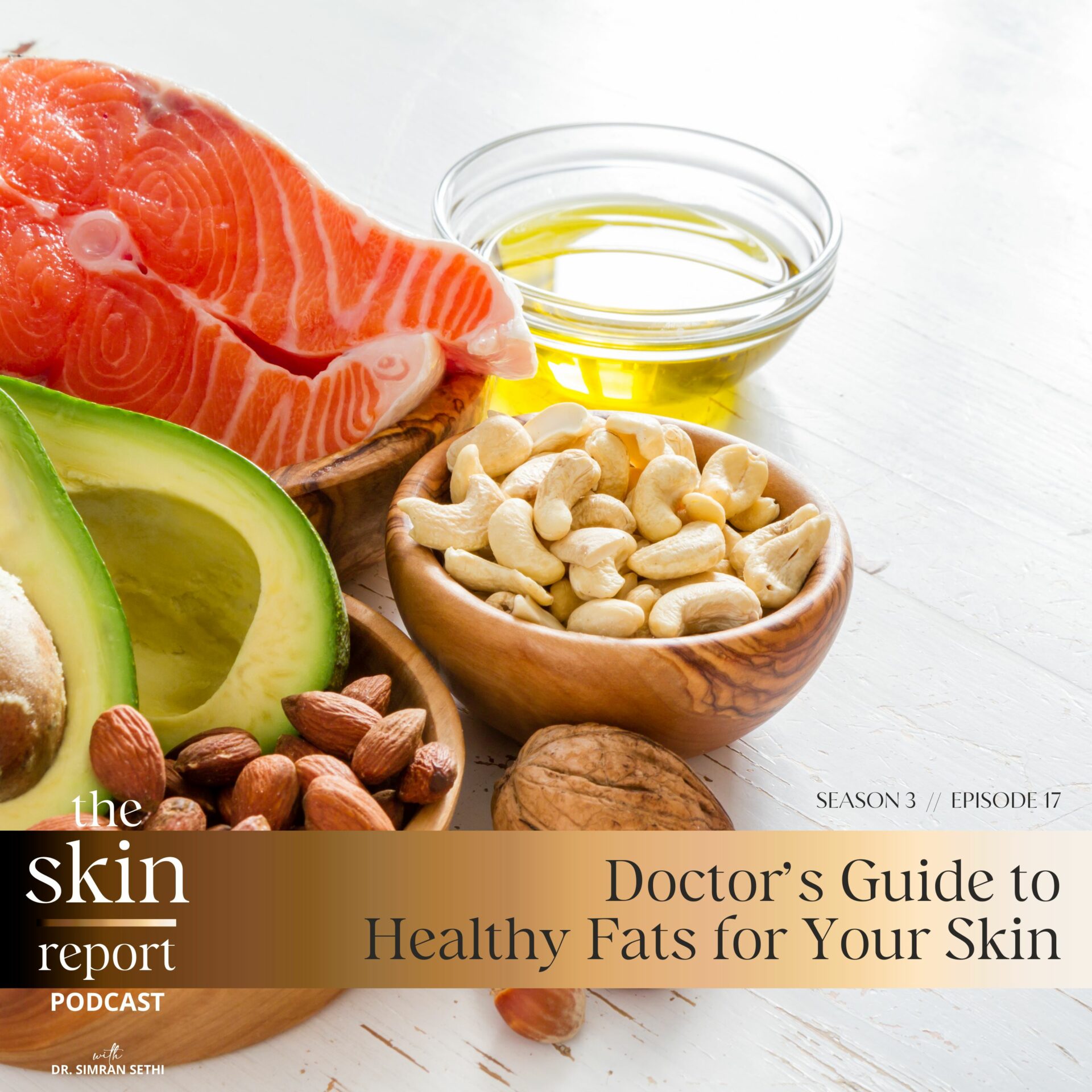Subcutaneous Fat
The Secret to Youthful Skin
Our societal beauty standards typically uplift leaner bodies. But when it comes to our skin, maintaining subcutaneous body fat is crucial to supporting a youthful appearance.
In this episode, host Dr. Sethi discusses the role of subcutaneous fat and how it projects the skin and smoothes wrinkles for a youthful appearance. She explains how subcutaneous fat can diminish naturally through processes like aging and weight loss – and how people can restore this volume even after it is lost. Through methods like Sculptra injections, facial fillers, and fat transfer procedures, people can help restore fat underneath the skin. The episode covers each of these options and explains how they function to provide volume to the face and even other areas of the body.
As the founder of RenewMD Beauty Medical Spas and a woman of color, Dr. Sethi is dedicated to spreading science-backed skincare information on The Skin Report. Listen to this episode to learn more about subcutaneous fat and volume restoration options!
Follow and DM a question for Dr. Sethi to answer on The Skin Report Podcast:
Renew Beauty Instagram:
https://www.instagram.com/renewmd_beauty/
RenewMD Beauty Medical Spas, California:
https://renewmdwellness.com/
Dr. Sethi on TikTok:
@SkinByDr.Sethi
Skin Barrier Repair Kit – Special Offer 20% off Promo Code: skinbarrier20
Skin By Dr. Sethi – 15% OFF for new customers: GLOW15
This transcript was exported on January 29, 2024 -view latest version here.
Skincare can sometimes feel overwhelming, whether it’s finding the right products, ingredients or treatments, there’s a lot out there. But not always for people of African, Hispanic, middle Eastern and Eastern South Asian descent. That’s why I set out to educate myself and others so that we can all feel beautiful in our skin. Hello and welcome back to the Skin Report. I’m Dr. Simran Sethi, an internal medicine doctor, mom of three and CEO and founder of Renew MD Medical Spas and Skin by Dr. Sethi. Today we’ll be learning about the important role that fat plays in supporting our skin structure and overall beauty. Fat is often vilified for its negative effects on our body, heart, and overall health. However, when it comes to fortifying our skin and maintaining a youthful appearance, fat is a key player. Over the course of the next two episodes, I’m going to discuss how our understanding of fat in the face, under the skin, on our body and in our skin cells impact skin texture and tightening.
I’ll start from a more macro view and begin by discussing the role of fat under the skin. While all fat is technically beneath the skin, the fat that lies directly under the skin surface is called subcutaneous fat. In subcutaneous fat, fat cells create a protective carpet or layer under our skin to protect the underlying muscle. This fat layer protects the muscles, nerves, and blood vessels underneath and gives the overlying skin a plumper appearance. In other words, the subcutaneous fat layer underneath our skin projects the skin upward and actually reduces the appearance of a wrinkled texture. When we’re in our late teens we stop producing new fat cells, but the fat cells that we do have become enlarged. If we gain weight, the fat cells will grow which is an effect that makes many people believe that fat is detrimental to a youthful appearance. However, as subcutaneous fat projects and lifts our skin, it actually provides a youthful appearance to the face.
Think about celebrities or people who’ve lost a lot of weight, have you noticed how their face changes? While people often get excited about losing weight, they’re usually not happy with the skin laxity and gauntness that is left behind after this fat is minimized. The lack of plumpness in the facial fat can make them look tired and age especially under the eyes. And with less fat present to support their skin, their skin laxity may cause them to develop jowls, a less prominent jawline and sagging skin on the neck. When someone undergoes rapid weight loss, especially their face generally changes and they experience sagging. You may also have noticed that when people are on the heavier side, they generally have less visible wrinkles. This effect is due to them maintaining a more robust layer of subcutaneous fat underneath their skin, which lifts the skin and smooths wrinkles.
Coming up, we’ll talk more about subcutaneous facial fat, the key elements that make up a youthful appearance and ways to restore this volume once it’s lost. We’ve gone over how subcutaneous fat impacts our skin’s appearance, volume, and structure, so why exactly does losing this facial fat tend to make people look older? Well, this aging effect is a natural process that happens as the carpet of fat under our face becomes smaller. The skin on the face is very reliant on subcutaneous fat to keep it lifted, smoother and look youthful. In fact, when I speak to women who are in their 50s and above, they all agreed that they liked how they looked best in their late 20s and early 30s. This is because their face was more lifted due to more fat in the temples, cheeks, and lower cheeks. Yet they didn’t have as much baby fat that made them look twofold.
Now is a good time to explain a concept called the Triangle of Youth, which refers to the three features that are set to represent a youthful face. These include high cheekbones, fuller cheeks, and a slim lower face with a defined jawline, much like a triangle with the base at the cheekbones. Over time, this triangle appears to invert as the upper face loses volume and the volume shifts downward. There are multiple factors that causes inversion, loss of elasticity in the skin, loss of fat pads that hold skin up and shrinking facial muscles. As a result, the face starts to sag and look tired. This is also why young celebrities like Leah Michelle have received criticism on social media for getting fat removed from their cheeks through a process called buccal fat removal. Removing the buccal fat pads can make us look too gaunt, causing our appearance to age prematurely.
When it comes to our face, fat is actually our friend. Buccal fat removal is also commonly criticized because it’s very difficult to reverse. When fat located within the buccal area is taken away, this volume cannot be restored to this area in the way that it appears natural. This effect is very important to know when considering this procedure. But on the bright side, it is possible to restore the appearance of subcutaneous facial fat that is lost due to natural body processes like weight loss and aging. I have many patients come into my practice seeking ways to restore lost volume and I inform them of the multiple options that are available to help restore fat underneath the skin, both in the face and even other areas of the body. Let’s start with discussing the most popular, safest and natural one. Poly-L-Lactic Acid, which is also known as Sculptra.
Sculptra can be injected underneath the skin on the temples, cheeks, lower cheeks, and folds around the mouth to provide volume and support beneath the skin in these areas. Sculptra comes as a powder which is then reconstituted into a liquid, before it is injected beneath the skin and massaged into the facial tissue. The microscopic Sculptra particles then trigger a reaction that promotes natural collagen production over a course of three to six months. This collagen essentially replaces lost fat pads and recreates a beautiful lift and projection in the face. Additionally, because this process is stimulating collagen, it reduces unwanted skin texture and creates a natural glow in the skin within just one month of injection. Now, a lot of people mistake Sculptra for a filler, but it is not a filler. Up next will go over some of the key differences between Sculptra and facial fillers.
Sculptra and facial fillers can both be injected into the face to help restore the appearance of lost volume. However, they have several distinct differences that patients should consider when choosing between the two. Fillers are made of hyaluronic acid and are a gel-like substance that is injected underneath the skin or in the lips to enhance volume. Fillers can give instant results when injected. However, fillers are generally not the first choice for use when trying to lift sagging skin. This is because lifting sagging skin can often require a lot of volume injected into the face and using filler to substitute this volume can cause the face to look very unnatural. Sculptra on the other hand is a class of substances called biostimulators. Sculptra is not a gel-like substance like fillers, but it is instead a powder that is delivered underneath the skin for the sole purpose of stimulating collagen production.
The collagen production, it’s also not instant like filler as it will naturally occur over a course of months. But because your body is doing all the work, the collagen that is produced will be modeled around your natural bone structure and essentially help you look like a more refreshed you. Sculptra is also performed typically over a series of two to three sessions spaced six weeks apart depending on how much laxity, texture and volume loss a patient has, and the results take three to six months. Because fillers only replace volume, they do not have any effect on your skin texture and skin health. On the other hand, Sculptra is a bio stimulator of collagen which allows it to improve skin quality and texture. In my practice, Sculptra is my go-to choice for lifting the skin. I preferred because the loss of fat pads is a key contributor to the development of jowls and a tired appearance, and Sculptra does an excellent job addressing these effects naturally.
In the first month after injection, everyone experiences an improvement in skin texture and an overall glow. And in a matter of three to six months, they have a more youthful appearance like they did in their younger years and a more defined jawline. At this point, I want to caution people from solely relying on fillers for lifting the face and jawline. Fillers certainly have a use in the facial volume replenishment process, but should be used sparingly and not for lifting. In my professional opinion, if you start using fillers to build back the fat pad foundation of the face, you are going to end up looking unlike your natural self over time. Yes, fillers give instant results, but they’re not going to always give a natural result. When you see celebrities that look overdone or appear to have a pin cushion like face or a pillow face that doesn’t look anything like their normal appearance, it’s usually due to excess use of fillers.
I will do a separate episode on best and worst places to inject fillers in the future. Finally, let’s look at the differences in cost between Sculptra and fillers. Sculptra is price based on the number of vials used and most people need four to six vials. Each vial of Sculptra can range from $850 to $1000 based on your location or your doctor’s experience. That said, the process can be costly upfront, but results can last for two to three years because it triggers your own natural collagen production. In contrast, each filler syringe costs 800 to $900. And if you’re getting them to replenish fat pads and create a lift, you will use anywhere from two to five syringes. Additionally, this will last you 12 to 18 months before you’ll have to add more. To conclude, not only is Sculptra a much better and natural option, but it’s also more cost-effective in the long run.
Sculptra also delivers a natural lift with collagen and skin texture benefits unlike fillers. The last volume replenishing method that I want to discuss today is the transfer of fat from the body into the face. Fat transfers have been around for a few decades and the technique and technology around them have evolved to look more natural. To make the magic happen, a blunt needle is used to take fat from the thighs, abdomen, buttocks, or lower back. It’s then spun in a centrifuge to isolate viable fat, which is then injected into various parts of the patient’s face. Common areas of injection include the under eye hollows, cheeks, temples, and around the mouth. This type of fat transfer is called an autologous fat transfer and can also be performed in other parts of the body. Anywhere from 50 to 80% of fat survives in the transplanted area, which is a favorable rate.
The surgeon may also inject some plasma rich platelets derive from the patient’s blood to increase the survival of the fat cells in the new site. Adding the platelet rich plasma and repeating the process again in a few months will improve this fat survival rate even further. Generally, patients report results that last anywhere from three to five years, which again is excellent longevity. Fat transfers when performed by a skilled surgeon are also a natural option to fat replenishment and creating a resultant lift. However, they require a few more days of downtime than Sculptra, but not significantly more. Results are final in six to nine months, but can start to show within a month after injection. The fat transfer procedure is also more expensive than a Sculptra treatment and can range in the four to $7,000 range depending on the amount of replenishment and physician’s experience. If not cost prohibitive, this is another excellent and natural option to consider.
In part two, we will go over other natural methods of improving the subcutaneous fat volume for plumper healthier skin. Tune in as I will discuss how adding fat in your skincare and oral supplements can nourish your skin cells and create a natural glow in the next episode. Thank you for listening in on the episode of The Skin Report Podcast. And until next time, love your skin, love yourself, and celebrate your beauty. If you’d like to learn more about science-backed skincare or medical aesthetic treatments, please subscribe to and turn on notifications for the skin report so you always know when a new episode is up. We have a newsletter that you can sign up for on Skinbydrsethi.com, so that you can stay up to date on all our latest products and more. Additionally, if you have a skincare question or want to make an episode topic recommendation, please message me @theskinreportbydrsethy.com, which is linked in my show notes and I’ll be sure to answer your question in an episode soon.
Transcript by Rev.com
